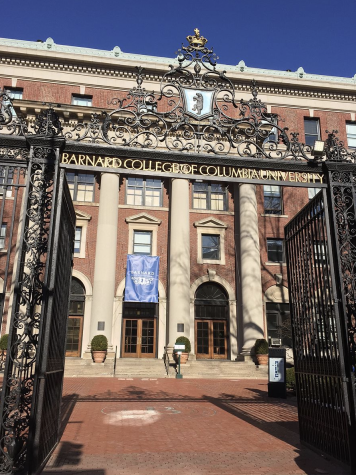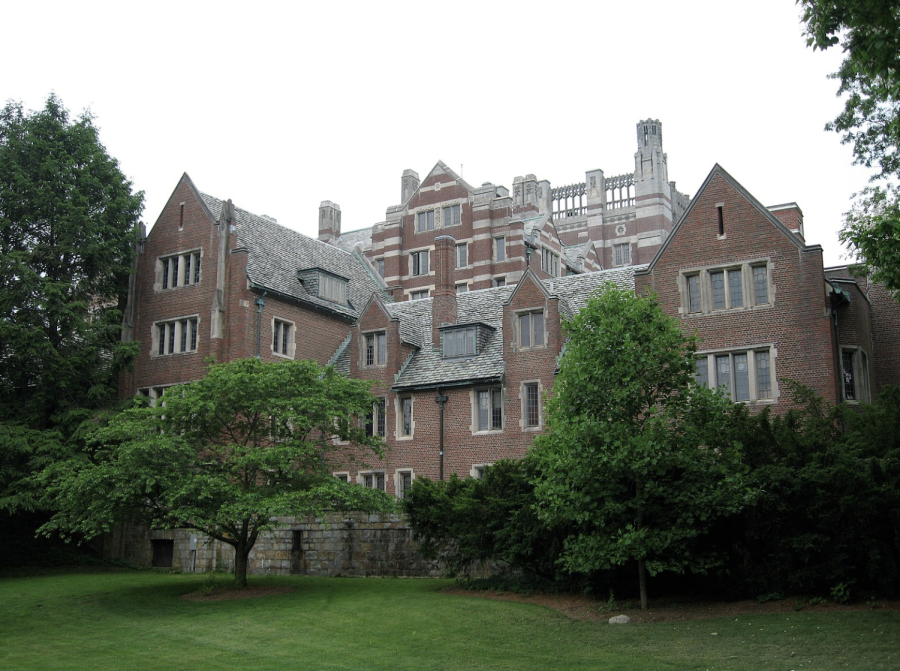Single-Sex Colleges are Home to an Empowered and Innovative Student Body
Photo from Wikimedia Commons. Licensed by https://creativecommons.org/licenses/by-sa/2.0/.
The Wellesley College Founders Hall displays the university’s unique and historical architecture. Wellesley is located in Wellesley, Massachusetts, and is known for alumnae like former U.S. Secretary of State Hillary Clinton.
Dec 13, 2022
With approximately 33 strictly for women and three strictly for men remaining in the U.S., single-sex colleges have become a dying art that are wrongly cast off as obsolete.
The controversy surrounding these institutions roots in the question of if they even need to exist in the 21st century. Despite how some dismiss the concept of a single-sex college, believing it to be even more unfair than the typical college admissions process, the truth is that these institutions were forced into existence by the nation’s history of sexism. It’s all about closing the gap, right?
Some may argue that a co-educational education is a step into the real world; however, college is a time to develop confidence in oneself and explore interests in a safe environment. A Dartmouth study found that men speak in class 1.6 times more than women do in a co-educational college setting. A change in classroom dynamics can encourage women to participate more within a given discussion, something that many single-sex women’s colleges note as invaluable.

Sage Creek senior Emily Griffith has explored her options for college next year, landing upon Wellesley College as a potential suitor based on a recent visit to the campus.
“With Wellesley being a historically women’s college, the guides were explaining how uplifting the environment in classes are and how they were never nervous to talk in class,” Griffith noted. “I could also tell how much care and effort they put into their student body, with it being such a small school.”
Meanwhile, remaining institutions like Wellesley have done something extraordinary. Just ask the alumnae network: award-winning director and Barnard College alumna Greta Gerwig, more specifically.
Gerwig directed the 2019 version of “Little Women” alongside her award-winning film “Ladybird.” Similar to “Ladybird”’s main character Christine “Lady Bird” McPherson, Gerwig had ambitions to leave California for a prestigious university on the East Coast.
At Barnard, Gerwig was inspired by a sense of belonging.
“We did the tour of Columbia, and I liked it,” admitted Gerwig in an interview with Barnard Magazine. “But when I went to Barnard, I wanted to be all the women I met there. I was instantly drawn to the place and the women. They all seemed like superheroes to me.”
Single-sex colleges also foster a plethora of unique opportunities for students to discover for themselves, ones that may not be available otherwise at a co-educational university.
Sage Creek Counselor Dr. Megan Corazza acknowledges these unique opportunities with a first-hand account of her visit to Wellesley College, which had been particularly memorable.
“I remember being in this very scientific lab. It was clearly some kind of engineering facility with welding, and I remembered seeing two young women working on a project, and I thought to myself: I’ve never seen two women working on a welding project for engineering in this physical space.”
Admittedly, these focused institutions are mainly an East Coast phenomenon and a mystery to Californians. This has led to little to no applications from Sage Creek seniors to single-sex colleges both in California and all over.
While there is a lack of their presence in California, the East Coast is abundant in these educational opportunities and encourages students to travel coast to coast. The College Board has reported in their 2022 report that out-of-state students receive greater discounts and aid than in-state students in order to better match the price of education elsewhere.
Regardless of preconceptions and misjudgments, single-sex colleges are a fundamental part of history that deserve preservation for all they have accomplished and the opportunities they continue to foster.
Corazza recognizes this rich history and its relevance to the present.
“The whole intention when they created single-sex colleges was to provide students an opportunity. It’s just about kind of taking the gender piece out and making sure the academic opportunities are there.”







